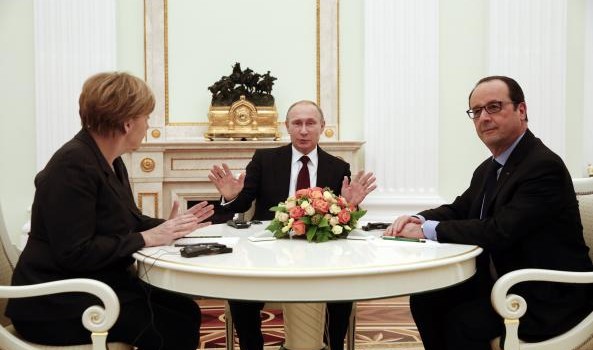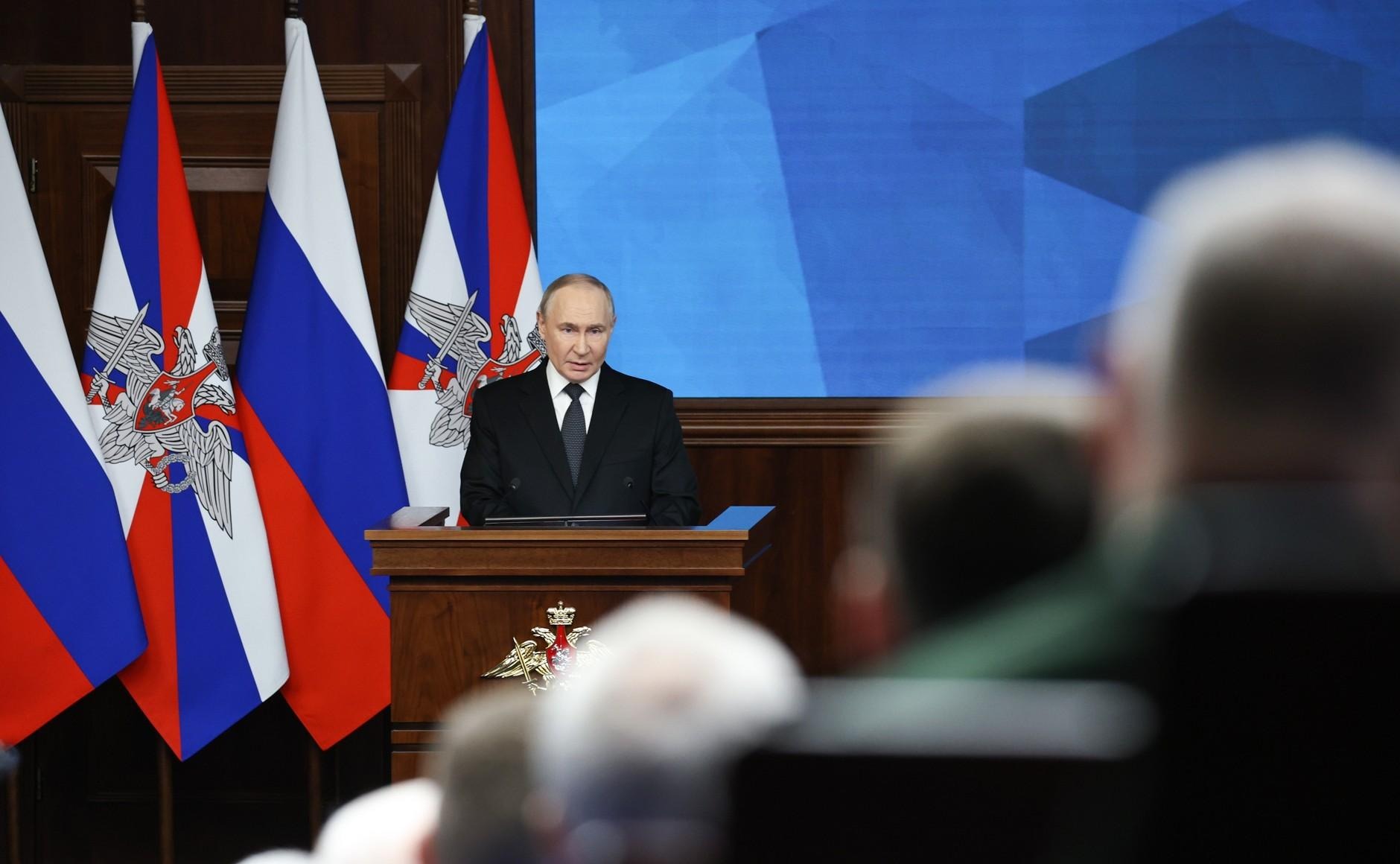
Ukraine in a Leaderless Europe: A Net Assessment (Part Two)
Ukraine in a Leaderless Europe: A Net Assessment (Part Two)
*To read Part One, please click here.
Most of the “old” Europe—pre-1999 members of the North Atlantic Treaty Organization (NATO) and the European Union—does not acknowledge the wider implications of Russia’s war in Ukraine (let alone the fact that it is a war). That group treats this war, instead, as an internal conflict localizable in Ukraine, solvable to Russia’s satisfaction at Ukraine’s expense, to be followed by normalization of Europe-Russia relations, without adverse consequences to Europe or the Euro-Atlantic relationship. Most of the “new” Europe (Central and Eastern), on the other hand, regards Russia’s war in Ukraine as the opening stage in a strategy to overturn the post-1991 status quo, in Europe as a whole and beyond (see Part One).
The “old” and the “new” groups, however, are no longer homogenous. The Nordic countries straddle an increasingly fluid “old”-“new” divide regarding Ukraine. The United Kingdom is now at last moving toward the United States–aligned “new” Europeans on Ukraine. The European debates focus mostly on how to proceed with the sanctions on Russia, which are due soon to expire.
On March 9, at the White House, in Washington, EU Council President Donald Tusk (former prime minister of Poland) noted, “Our enemies use propaganda against us, violate the sovereignty of our neighbors, they want to weaken the political commitment of the Western world. Today we can see with full clarity that they are trying to divide us in Europe, as well as Europe from America” (EuroNews, March 9). Tusk, however, represents one of the two competing policy lines at the EU in Brussels. The EU’s high representative for foreign and security policy, Federica Mogherini (former foreign minister of Italy) represents the Russia-First line in that divided institution. Italy’s incumbent prime minister, Matteo Renzi (who happens to be Mogherini’s political patron), visiting Kyiv and Moscow on March 4–5, suggested “federalizing” Ukraine to satisfy the “pro-Russian regions” (Corriere della Sera, March 5).
The EU’s drift and NATO’s aloofness are parallel responses to Russia’s war against Ukraine. Their parallelism was perhaps built-in to some extent, given the two organizations’ membership overlap. Some of their member countries had, all along, placed their own bilateral relations with Russia above strategic considerations generally, and above Europe’s eastern neighborhood in terms of priorities. Apart from this common factor, however, there are separate considerations at work that are shaping the EU’s and NATO’s attitudes, respectively, amid this crisis.
NATO’s aloofness in this case seems largely pre-determined. For more than a decade, the Alliance has neglected its eastern partners’ security requirements, even where those requirements closely overlap with NATO’s own. While NATO self-recused from conflict-management in the neighboring post-Soviet space, Russia enjoyed a free hand in initiating, “freezing,” and even “resolving” conflicts there on Russia’s own terms. The Kremlin seems well along to repeating that performance at a higher level of sophistication and on a larger stage in Ukraine’s east.
It is precisely in Ukraine, however, that a NATO-Ukraine Distinctive Partnership had flourished after 1995, positioning Ukraine by 2005 for a possible start on the membership track. NATO and the US were regularly conducting multiple exercises with ground, air, and naval forces in Ukraine during that period. Both sides, however, failed after 2005 to build on those achievements. That kind of relationship seems almost utopian from NATO’s side at the present juncture. The Ukrainian president, government and parliamentary majority are eager to re-launch close cooperation with NATO. The North Atlantic Alliance’s internal differences (mirroring those within the EU) and the regional imbalance of power, however, constrain NATO’s decisions in this regard.
Yet, the EU’s paralysis on Ukraine since 2014 was not pre-determined. The EU was officially pursuing a political and economic association with Ukraine by treaty. A Ukrainian president and government proposed to bring Russia into that process as a third party, but they were removed cataclysmically by Kyiv’s Maidan. The European Commission was driving the association policy, generally tolerated by Western European countries, but without political or fiscal commitments on their part. The EU and Ukraine signed the political and economic parts of the association agreement in March and June 2014, respectively. That Commission’s term of office, however, expired in October 2014; a distinctly less strategically minded Commission replaced it; Berlin moved de facto into the driver’s seat of the EU-Ukraine association process; and Russia coerced Ukraine into the Minsk One and Minsk Two “armistice” agreements.
Each Minsk agreement coincided with a reformatting of the EU-Ukraine association process, turning this from a bilateral process into a trilateral EU-Ukraine-Russia process. Germany was the main broker in both cases. The first change envisaged a trilateral framework for explanatory work and consultation with Russia (initially supposed to function at the expert level, then raised to the ministerial level) on the EU-Ukraine free trade agreement.
The change accompanying Minsk Two goes farther, giving Russia a vote in what had been an EU-Ukraine negotiation. The “Normandy Group’s” February 12 declaration (supplement to the Minsk Two agreement) envisages “trilateral negotiations between the EU, Ukraine, and Russia, aiming to draw up practical solutions to issues of concern to Russia” (EurActiv, February 12, 13). Thus, trilateralization would advance from explanations to negotiations (i.e., re-negotiating the EU-Ukraine free-trade agreements already signed); while the aim of consulting grows into the aim of devising solutions (i.e., decisions with Russia’s involvement) (see EDM, February 13, 19, 20).
To be sure, the “Normandy Group’s” declaration is nonbinding. It does, however, reflect the views of its German and French co-authors, Chancellor Angela Merkel and President Francois Hollande, who worked out the document personally with Russian President Vladimir Putin. The German and French governments can now be expected to seek EU approval for inserting Russia with a vote into the EU-Ukraine association process.
This development is unprecedented in terms of procedure, substance, and context. Procedurally, Germany and France pre-judge EU policy outside of an EU forum by a separate agreement with Russia. Substantively, Russia’s declared economic interests in Ukraine are being weighed against Ukraine’s own interests in an economic association with the EU. In terms of context, this Franco-German-Russian understanding forms a part of the February 12 declaration that deals mostly with implementing the Minsk Two agreement, thus connecting the two processes. This strange linkage remains unexplained at the official level. It seems designed, at least in part, as an economic “incentive” to Russia to respect the ceasefire, again at Ukraine’s expense.
Ukrainian President Petro Poroshenko had no choice in Minsk but to add his name to the declaration. Moldova and Georgia find themselves in broadly similar circumstances: protracted conflicts with Russia (albeit “frozen,” no longer fluid as in Ukraine), and association agreements signed and nationally ratified with the EU in 2014. Chisinau and Tbilisi might now ponder whether they might also be asked to negotiate their own agreements with the EU anew, this time with Russia’s participation.


